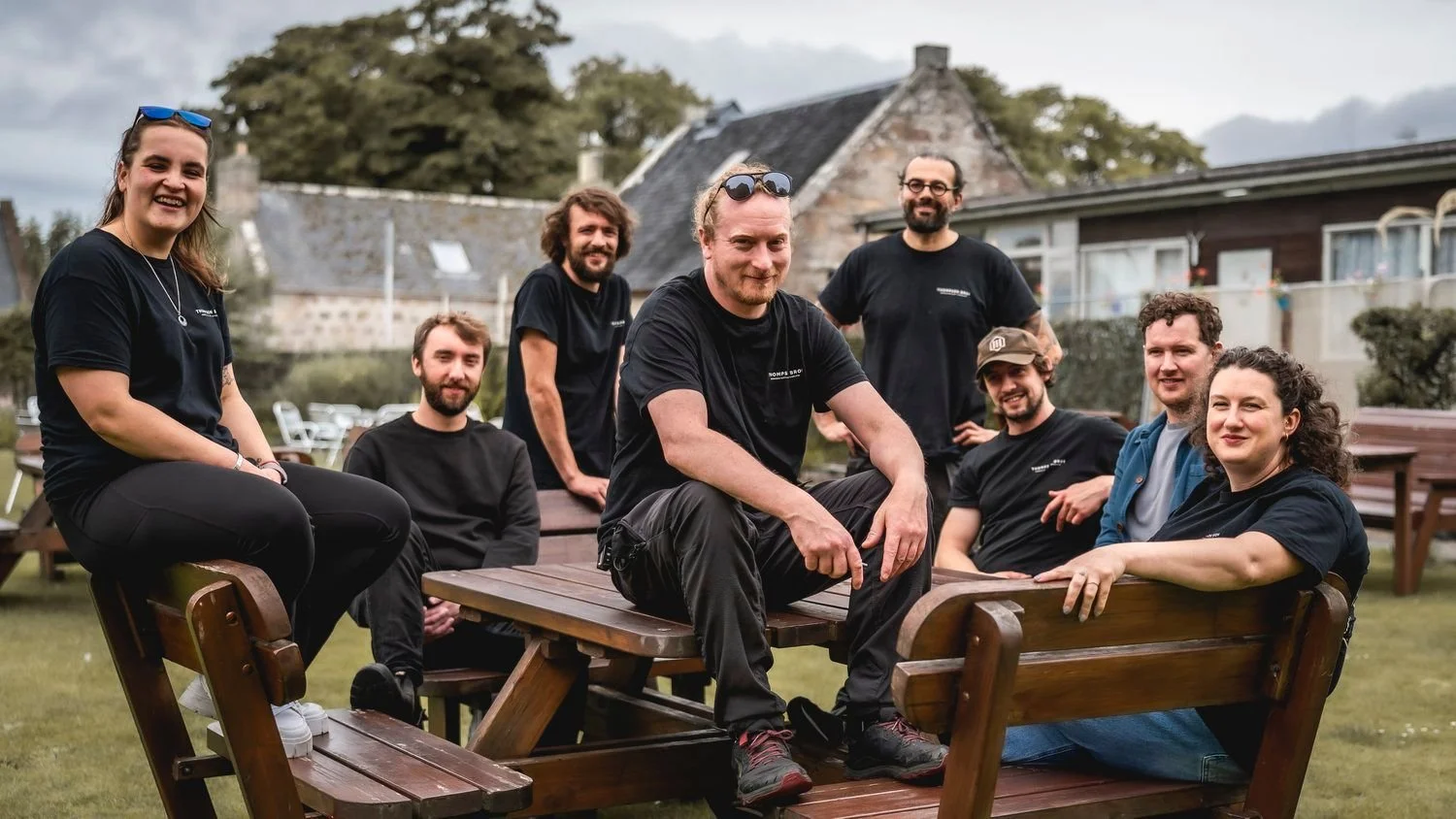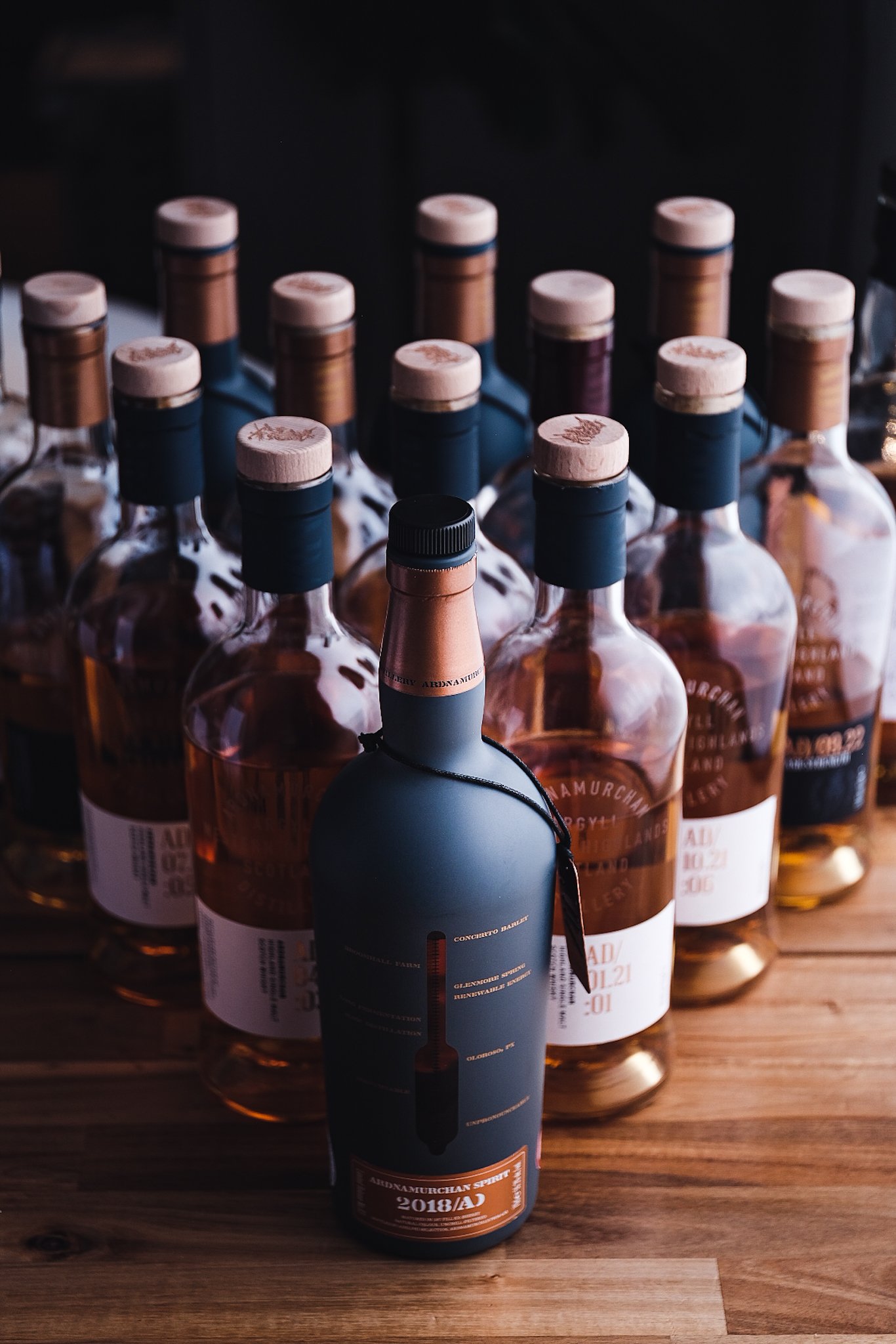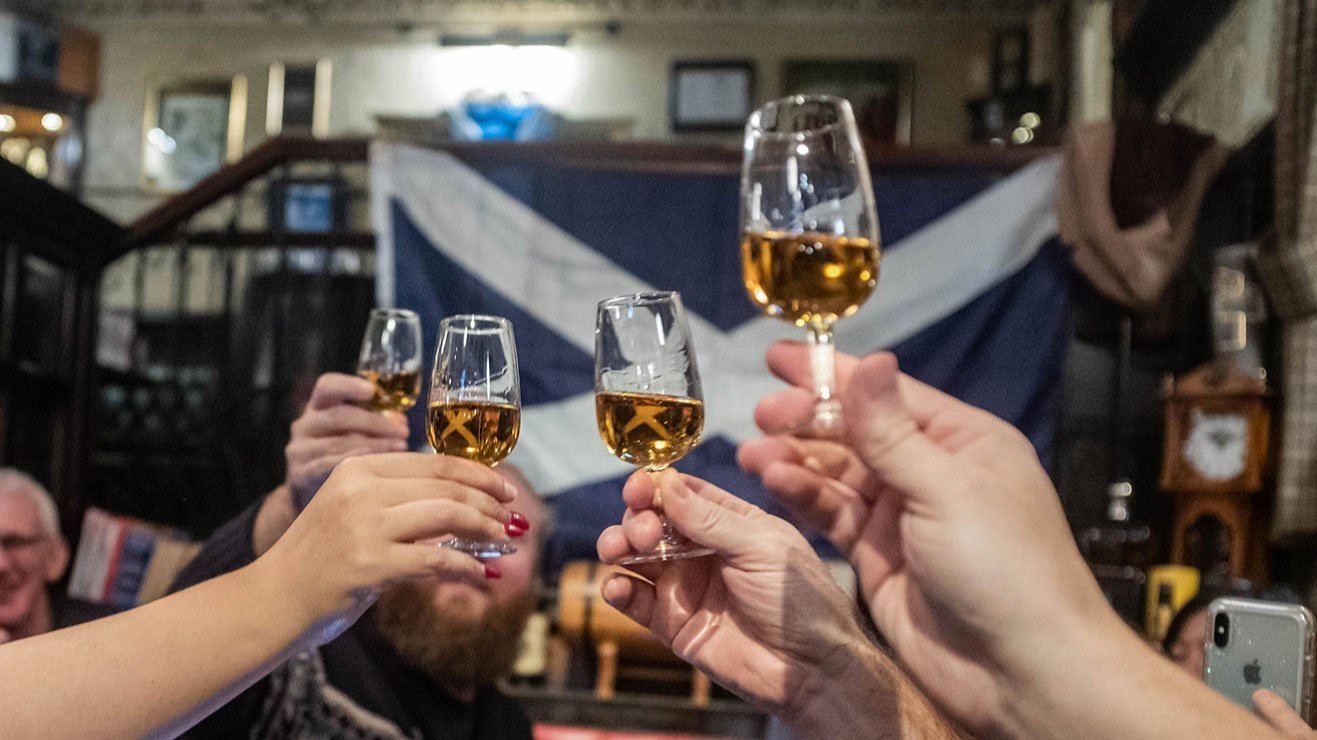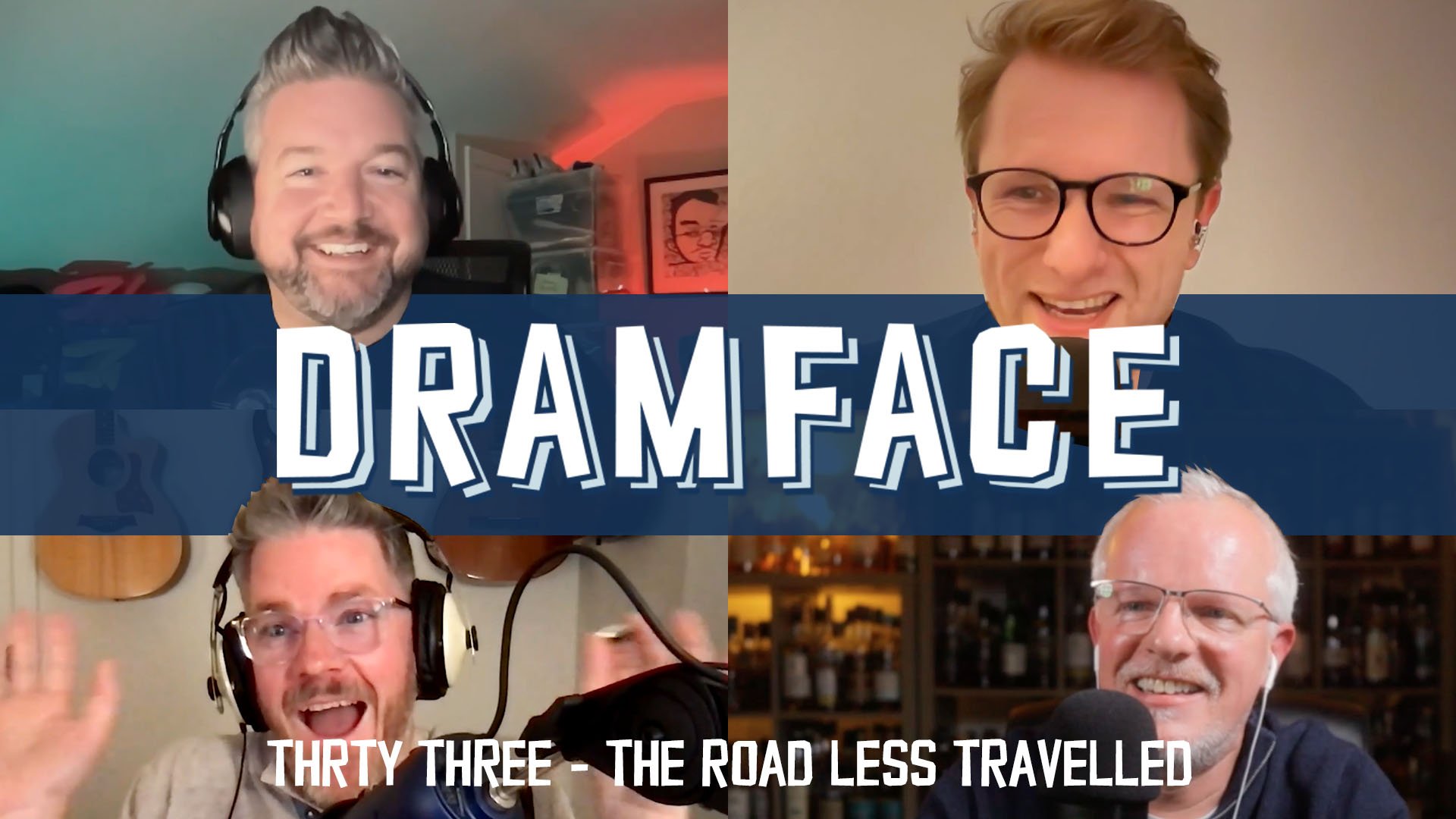Glenfarclas Cask Strength Comparison
Official Bottle vs North Star 11yo | Various ABV
An Enthusiast’s Plea
Unlike a typical Dramface review, this is more like a plea to one of my favourite distilleries. I’m a fan, and I would like to let you know how I feel about Glenfarclas in 2025.
Dear Glenfarclas,
Like many, you are a distillery with great tradition. And, just like the whisky industry itself, you are no doubt tradition driven. However, a lot of times the answers to questions on why things are done a certain way are simply “because it’s always been done that way”.
Some practices may even be established as superstition, only for researchers to later discover practical reasoning behind them. An interesting anecdote shared by Alan Winchester - formerly master distiller at Glenlivet and tour guide at Glenfarclas - during an interview with First Phil Whisky involved an experience where he was asked to wash the stills. As he hosed the top of the still necks, he was very sternly spoken to, “don’t clean the top of the still!”. At the time this simply felt like a superstition, but later research has shown that the patina at the top of the stills actually play a crucial role in fixing off notes during distillation, and the act of cleaning the top of the stills may actually damage the patina layer.
Some traditions are romantic, understandable or interesting, while others are less so. As an obvious example; spirit colouring (E150a caramel) is still used in Scotch whisky production. Used in the name of keeping products consistent, in reality it gives a false impression that there is more cask influence; in a way that perpetuates the “darker is better” perception.
Likewise, chill filtration is a process that is widespread in the industry, because there are producers who think that customers perceive whisky that may cloud over when cold as defective. Unlike a harmless superstition, these traditions are anything but. Adding colour is an active form of deception, while chill-filtration strips flavours and mouthfeel from malt whisky, both are pretty harmful in my books.
So, Glenfarclas, while I’m happy that you don’t colour your whisky, unfortunately, we understand you do chill-filter it, please let us know the cases where that’s not true, won’t you? Adding simple statements to the label are hardly anti-tradition, are they?
Some of the distilleries most celebrated by enthusiasts go on to earn huge reputations; those who strike the perfect balance between respecting tradition while embracing innovation. It can be understandably difficult, because respecting tradition in a way that appeases enthusiasts can sometimes come at a cost.
One obvious distillery that has taken pride in respecting traditions is Springbank, basically keeping their whole operation on site while resisting any form of modernisation means that their workforce is sizable compared to distilleries of vastly larger production scale.
Another distillery that has embraced innovation - while keeping within the bounds of tradition - is Loch Lomond. In experimenting with peating levels, yeast types, fermentation times, still shapes and styles, they have been able to, quite literally - share the ‘fruits’ of their labours with drinkers. I wish to congratulate Loch Lomond for releasing some of their potential in recent years - and there’s potential still to come - without sacrificing any ‘traditions’.
I’m not asking that Glenfarclas attempt to be a Springbank or indeed a Loch Lomond. I’m merely considering examples of distilleries that can juggle tradition with innovation and, with that, it seems to me like Glenfarclas is a lot like Springbank. There are clear differences, so let’s tackle those first.
You bottle most of your whiskies at 43% or below, Springbank does not. You seem to chill-filter most of your whiskies, Springbank does not. You have a capacity of 4 million litres per annum, Springbank’s annual capacity is 750 thousand litres, and they make a little over a third of that.
Yet there remain remarkable similarities: both you and Springbank are family-owned, with no multinational at the steering wheel; you both produce distinct and iconic spirits, possibly due to your decisions to maintain direct-fired stills (although Springbank only direct-fire their wash stills); you both, unlike a lot of distilleries, mature whisky on-site as opposed to sending them off site to mature in an entirely different location. For some, like Deanston, they’ll claim it’s a form of insurance. For others, such as Diageo, centralised warehousing is simply a necessity for space or pursuit of efficiency.
Of all the similarities, perhaps the most important is that both distilleries are fiercely loyal to tradition. Rather ironically, the fortunes of the two distilleries may have resulted in them falling on entirely different sides of it.
Springbank bottles their whiskies at a minimum of 46% ABV, allowing them to skip the chill-filtration process. Also, by embracing batch variation, there is no need for artificial colouring. You also omit colouring, but you bottle your whiskies at 43% or below (with the exception of, interestingly, the 15 year old). Yet you don’t tell us whether your whiskies are chill-filtered or not. With a the lack of information, we are left to assume that you do so (even for that 15 year old at 46%).
When it comes to tradition, you arguably have even more to defend. Consider the Glenfarclas 105, with its inception dating back to 1968, when George S. Grant bottled a cask at 60% ABV, equivalent to 105 imperial proof, which is widely considered to be the first core range cask strength whisky. Because of the consistently round number over the years, many assume that subsequent batches have been diluted to continually reach that 105º proof, or 60% ABV, but you’ve told us that is not the case.
When making the Glenfarclas 105, casks of different ABVs are vatted together with such precision such that the end product can be labelled at 105º proof or 60%. This extra traditional restriction has presumably made the job trickier for your whisky makers over the years, but it is part of the romance, and I commend you for the effort. This explains the huge batch variation of the 105, and if I stumble upon a good bottle of Glenfarclas 105, I should nurse it like a little baby, because the next one I buy is likely to be quite different.
Tradition, apparently, also dictates why your 15 year old is bottled at 46%: simply because the grandfather of your current Chairman preferred it that way, we understand. This is another piece of tradition that remains unchallenged, which is great, but why the rest of the range is bottled at 43% or below begs an explanation. Because without one, cynicism can only be expected.
Ask any invested whisky drinker, in 2025, what they think of Glenfarclas and their response would likely be indifferent. Again, I refer to the Dramface Top 40, where I find Glenfarclas sitting comfortably at 24th. It beat out Highland Park and Glendronach, but it’s also sitting behind less glamorous names like Glencadam and Edradour. All four aforementioned distilleries have rich histories and are capable of producing great whiskies, but in my very humble opinion, none have realised the potential that Glenfarclas has. At the time of writing, there are only three reviews of Glenfarclas on Dramface: a 15 year old by Aengus (4/10), a 21 year old by Broddy (6/10), and a 25 year old by Drummond (6/10).
As always, the score is just a number, the treasure is in the words. So let’s have a quick look at their TL;DRs: Aengus said of the 15 year old “A good whisky handled poorly - is batch variation to blame?”, Broddy of the 21 year old “Good - but at the old prices” and, hitting the nail on the head is Drummond mentioning of the 25 year old “...could be so much more”.
All three comments, I suspect, point to different flaws of operation. Broddy rightly called you out for price hikes, although I still appreciate the kind prices in my Hong Kong market where Glenfarclas 15 commands the equivalent of £68, which is reasonable for a 15 year old. Yet both Aengus and Drummond’s comments suggest that they taste potential in the whisky, but that potential is scuppered by processes post-distillation, may that be cask management, chill-filtration, lower ABV or myriad other factors. Glenfarclas’ whiskies are undoubtedly categorized in the sherry influenced category, but your core range expressions are neither here nor there, not quite the rich sherry of Glendronach or Glenallachie, but seemingly rather tame attempts, these days, to be considered a flag bearer for sherry-cask matured whiskies. In any case, maybe that’s the profile you’re aiming for but, if it’s not too rude to ask, would you mind showing a clearer intention by presenting your whiskies naturally?
Let’s look at Springbank again, how often does one take a sip of the Springbank 15 and think it hasn’t fulfilled its potential? Even if we don’t love it, I reckon not many. Maybe comparing Glenfarclas with Springbank is unfair, how about some other distilleries?
If one is to take a sip of Bunnahabhain 12yo or Glenallachie 15yo, would anyone think potential is unfulfilled? I don’t think so. Even Glendronach 15yo with its chill-filtration confusion is doing OK I’d argue, and all of these are sherry-forward whiskies, so we are comparing something more akin to apples for apples.
There is also another Speysider who present their core range at 43% yet are loved by enthusiasts and casual drinkers alike: Benromach. You see, they also offer a batch-varied Cask Strength on top of their - naturally presented - innovative Contrast series. In this onlooker’s book, they have an easy advantage and are growing in stature quickly, making the enthusiasts Top 10.
If I may continue - this is a plea after all - to now share my personal take on positioning, especially from my experience in my home market. The Glenfarclas core range, while occasionally reasonably priced, is weak. Passive consumers look past it because the branding is weak, they would rather pay for a more fancy looking Highland Park, or pay a bit more and get a bottle of Macallan 12yo, and I don’t think it’s solely because of packaging. I also sense the name ‘Glenfarclas’ simply isn’t a household name for casual consumers.
While it might take considerable marketing and branding budget to change that perception; there is an alternative; vocal and shouty enthusiasts (like me!) simply know to look past Glenfarclas and focus our attention on the likes of Benromach or Bunnahabhain. In other words, your only weapon remaining, Glenfarclas, is price. Which perhaps explains why you are often priced so modestly for what you offer.
Sure, being family-owned means you don’t have to sell your soul to profit-driven shareholders and you are entitled to be content with where you are in the world of Scotch. But Glenfarclas, let me appeal to you; spread your wings and the sky is your limit, and not just to climb a few places in an enthusiasts list, you can easily reach the Top 10 of any whisky lover’s Top 40 rankings.
If you don’t believe me, indulge in a bit of introspection, and look at the success of your own Family Cask range. Instead of being mildly cask-influenced, whiskies from this particular range are generally rich and bold in flavour, leaving no illusions as to what the distillate and cask dynamics can display.
With all of the above said, let me summarise: I think the best course of action is to offer your whiskies at 46% or above, and ditch your chill filtration practices. Strengthen your core range and turn the heads of enthusiasts. Next, introduce an age stated - or vintage - batch varied, cask strength whisky into the core range, keep or enhance the 105 and let it bear that torch of tradition, but give your whisky makers free reign at creating a modern cask strength whisky. While there’s still a lot of work to be done, those, in my humble opinion, will be your first steps to further greatness.
Review 1/2
Glenfarclas Family Casks 2010, 2021 release, cask number 1503, first-fill oloroso sherry butt, 630 bottles, 60.7% ABV
£145 paid
Score: 7/10
Very Good Indeed.
TL;DR
Much more of an event than any of the official bottlings of Glenfarclas
Nose
That roasted note from Glenfarclas is right there front and centre, a sourness suggesting a combination of raisins and grapes, plus a bit of liquorice and even a fresh lemon note, rounding off with hints of a spent match stick.
Palate
A very fiery arrival, which isn’t only down to the high ABV, burnt sugar, burnt honey and even burnt maple syrup, the burnt note adds an extra dimension which makes this whisky more interesting and challenging. In recent encounters with this whisky I’ve found it, tonight as I’m tasting it, to be slightly smoky; only a small hint in the development. There are hints of caramel and vanilla, with sugar glazed almonds also making an appearance. A fairly balanced whisky and, even at 60.7%, I found it very drinkable neat. The finish is very long, as can be expected from a high-strength whisky, with notes of chewed coffee beans and a hint of retronasal smoke.
The Dregs
Compare these notes to the three other previous OB Glenfarclas reviews on Dramface and I’d say they are so vastly different, the combination of sherry cask and cask strength handling is making all the difference. This whisky is younger than all three mentioned above, all of which I have tried, and yet it is much more of an event than any. I think we know why.
Score: 7/10
Review 2/2
Glenfarclas 11yo, North Star Spirits, Bottling Series 022, bottled 2023, oloroso sherry butt, 56.5% ABV
£92 paid
Score: 7/10
Very good indeed.
TL;DR
Another great North Star, and another great Glenfarclas
Nose
Maple syrup arrives first out of the gates to greet my nose; very nutty too, a combination of roasted almonds and roasted peanuts, and even some mushrooms. The Glenfarclas roastiness is more subdued here, but still around. A lot less dried fruit than expected from a sherry cask, in its place is something like a fruity jam. I'm getting raspberry as suggested on the label, also strawberries and cranberries. Again, hints of spent matches towards the end.
Palate
A very drying and earthy arrival, the maple syrup from the nose is not sweet, instead it’s coming off as savoury. The dried fruits missing on the nose are showing up on the palate: raisins, dates and even dried apples. Salted caramel on the development, milk chocolates, dark chocolates, black coffee, black tea, warm honey, red winey tannins, all rushing out to say hello. Quite a complex palate but the notes are a bit bunched up, water is needed for me to parse out the complexity. The finish is fairly long with the drying black tea remaining to finish off the experience.
The Dregs
As distillates go Glenfarclas is very characterful and even in the hands of an indy the character is still there, especially faint hints of spent matches. Such is the unique experience of single cask whisky. I was very pleasantly surprised by the maple syrup note that I have never found from other Glenfarclas whiskies. A shout out to North Star for another cracking whisky in their portfolio. Having been around since 2016 this relative newcomer has my full attention and it’s a brand that is starting to become one that I’m comfortable buying without trying.
Score: 7/10
The Final Dregs
A fair and square OB vs IB here. While both whiskies scored 7 I think the OB slightly edges it, but the question is big and obvious: why is the OB so much more expensive?
Again, let me re-iterate my key message: Glenfarclas is set up for success, all that’s needed is the will and enthusiasts will take note. I’m going to say again that you are really not that dissimilar to Springbank; a few tweaks here and there, and you’ll be on your way to stardom.
You have a lot of fans, and all of us are waiting for your day to come. When that day comes, we’ll proudly say “we’ve been drinking Glenfarclas since before they were cool.”
Tried this? Share your thoughts in the comments below. MMc
-
Dramface is free.
Its fierce independence and community-focused content is funded by that same community. We don’t do ads, sponsorships or paid-for content. If you like what we do you can support us by becoming a Dramface member for the price of a magazine.
However, if you’ve found a particular article valuable, you also have the option to make a direct donation to the writer, here: buy me a dram - you’d make their day. Thank you.
For more on Dramface and our funding read our about page here.
Other opinions on this:
Family Casks
Whiskybase
North Star
Whiskybase
Got a link to a reliable review? Tell us.





















































